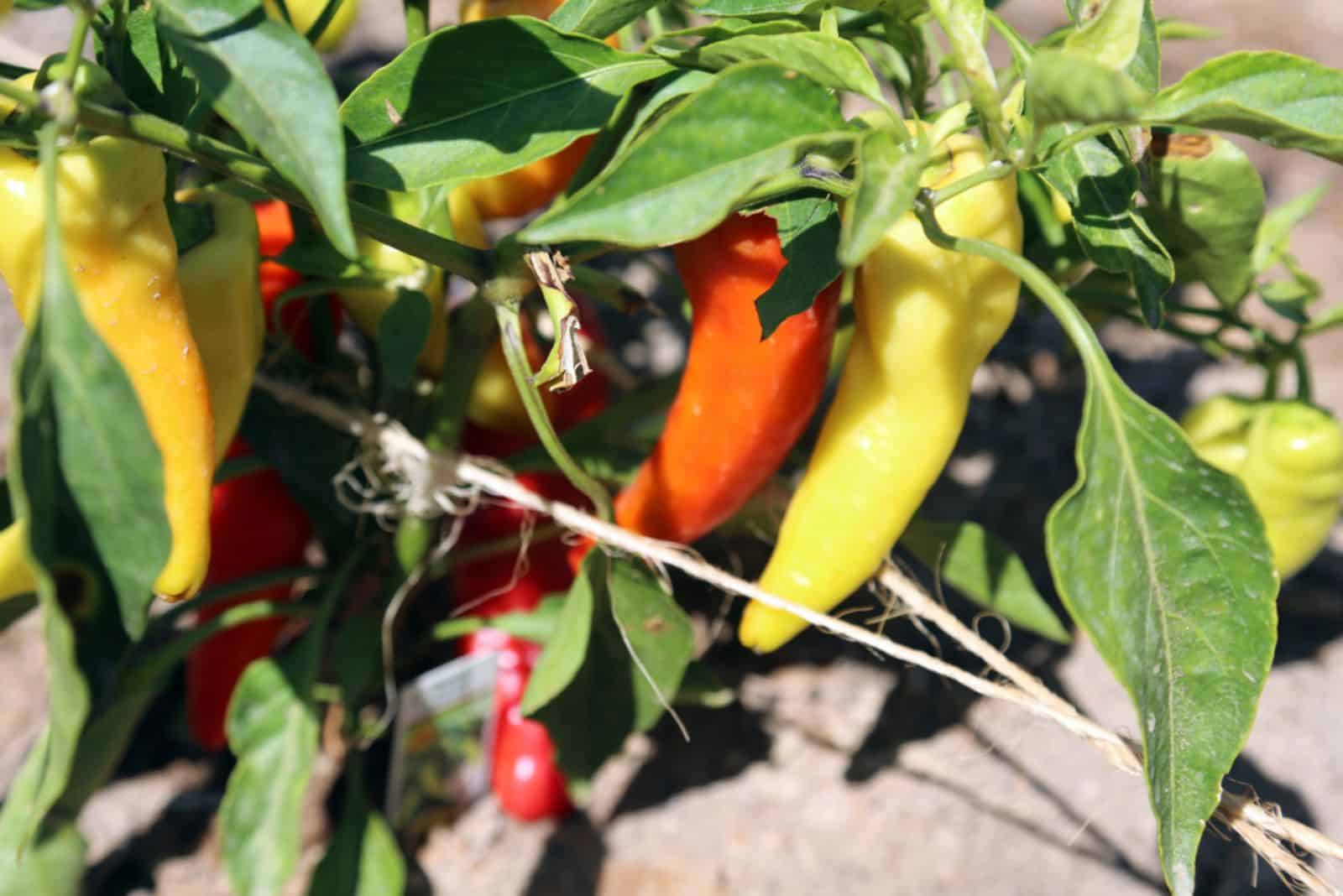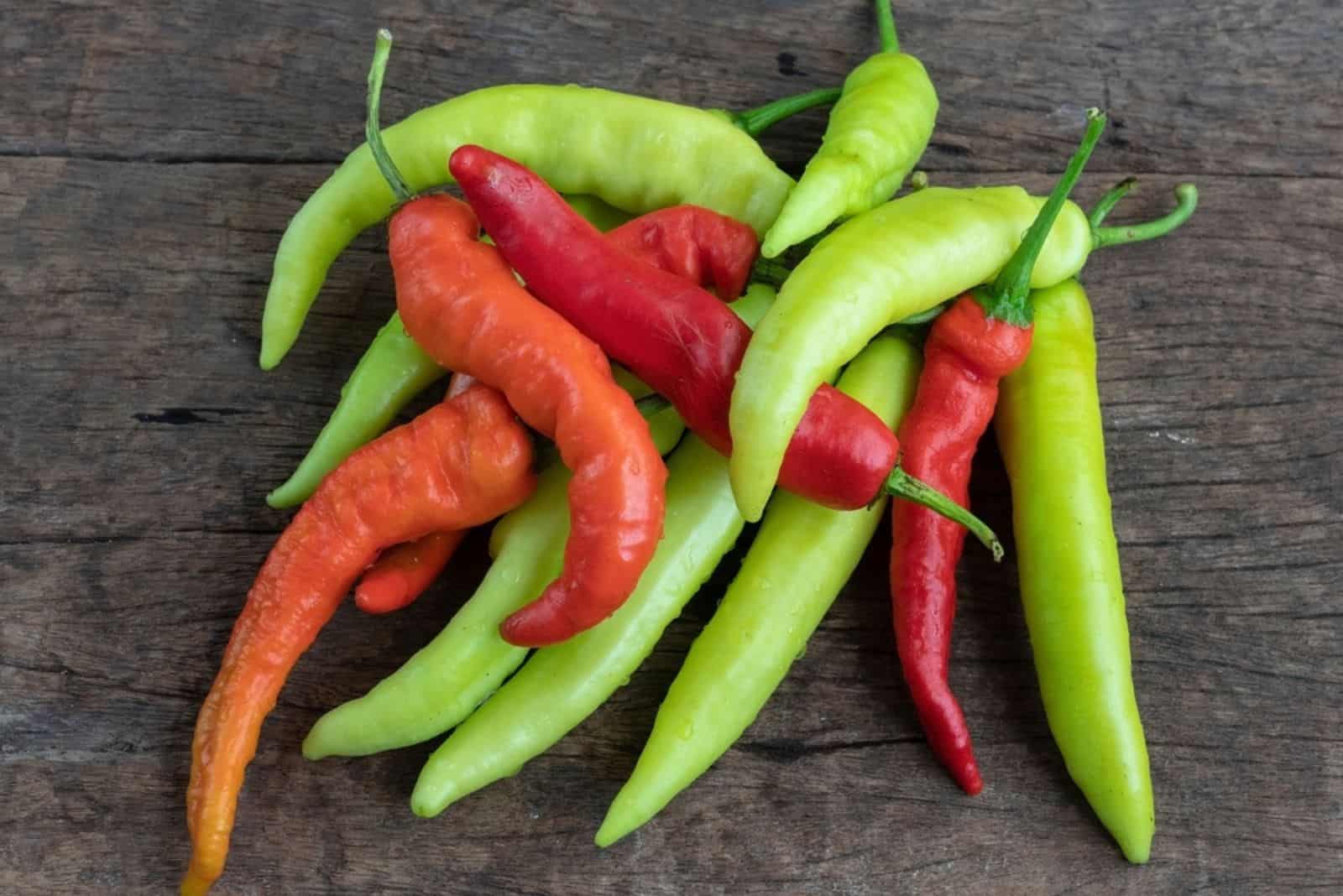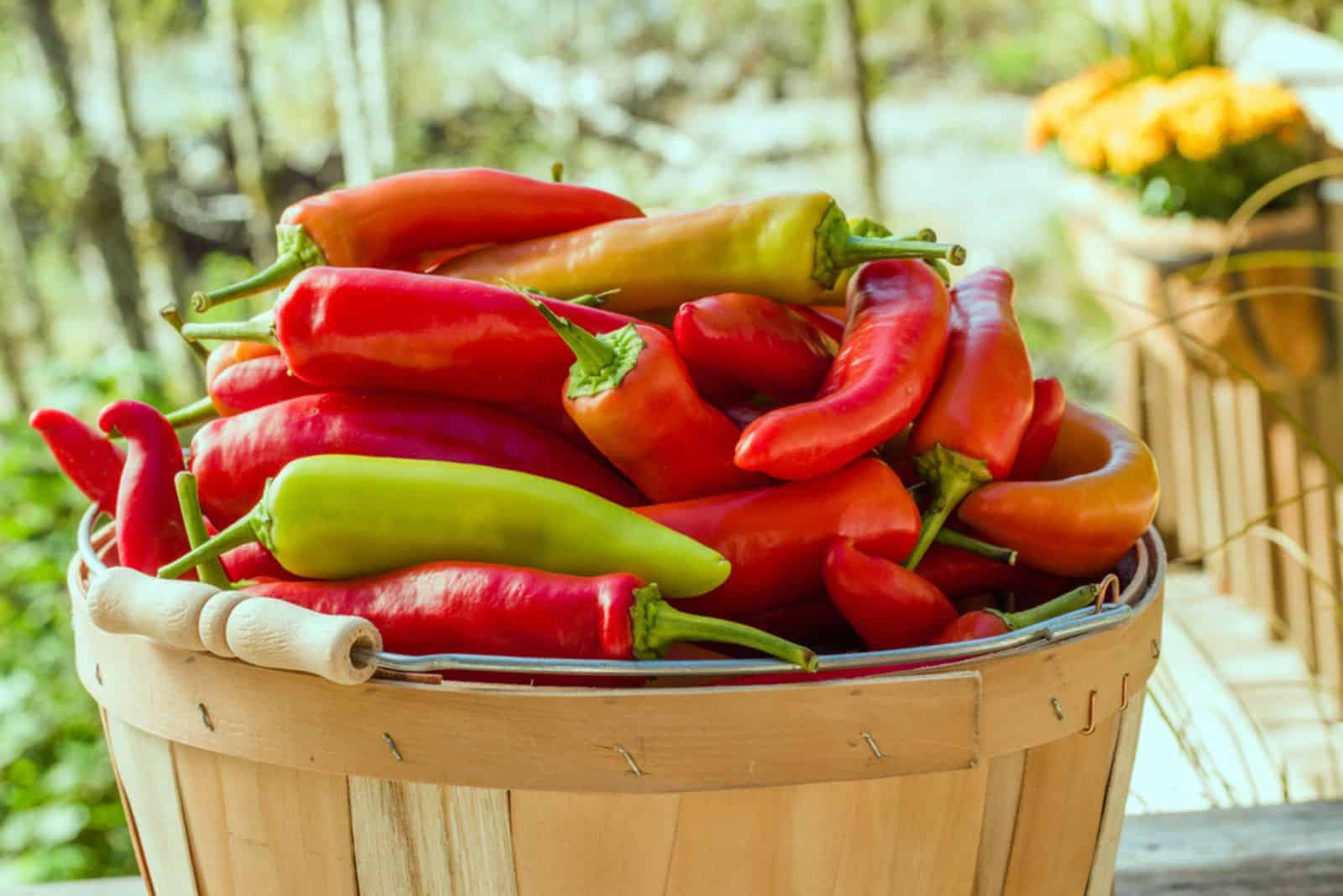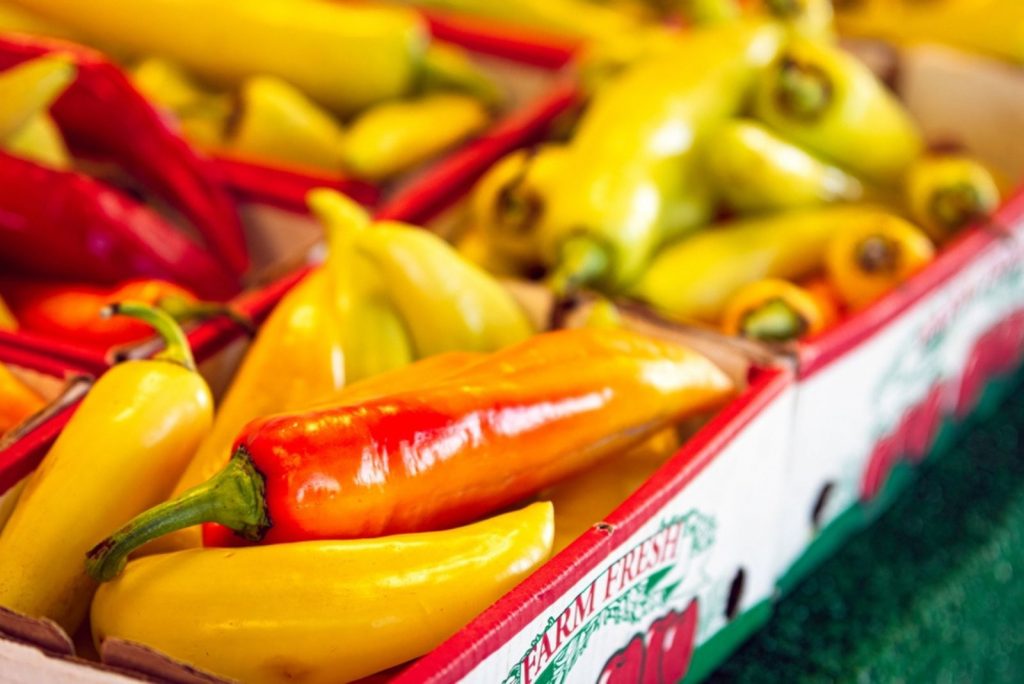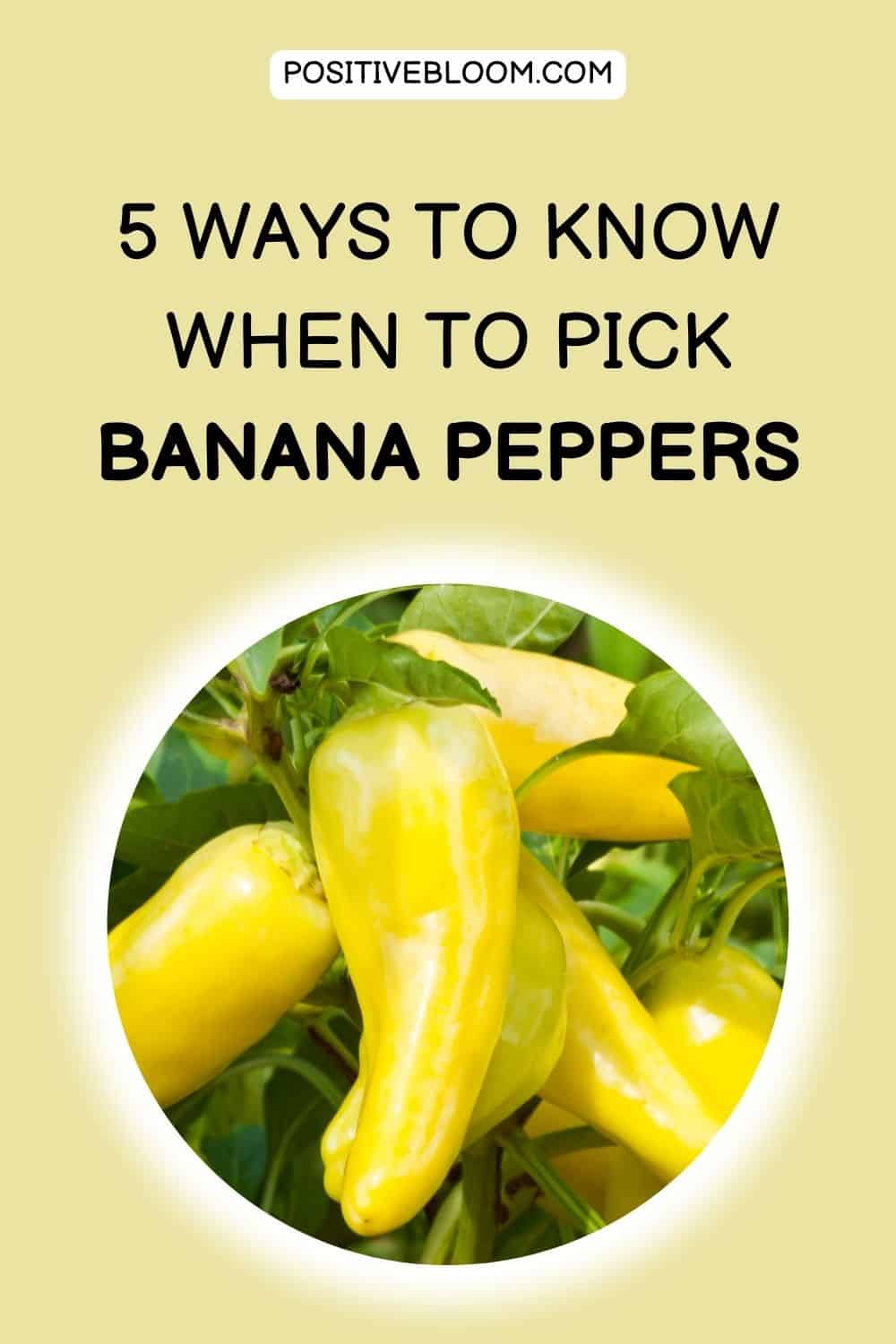Whether you like them sweet or hot, peppers are perfect summer veggies. You can use them in salads, fry or cook them, fill them with meat or potatoes, and much more; the options are endless!
And the best part is that there’s a pepper variety for everyone!
For instance, banana peppers can be sweet and hot, so they’re perfect for the whole family.
But when is the best time to pick banana peppers? What are the signs of ripeness? What is the best way to harvest them? How to store them?
These are all questions we’ll tackle in this article, and we will also give you some additional information about banana peppers so that you can be prepared for the harvest.
When To Pick Banana Peppers?
You’ll know that your banana peppers are ripe when the fruit is about 4-6 inches long, and they change color to red.
Of course, this can only happen if the pepper flowers have been pollinated, so knowing when to pinch them and when to stop can increase your yield tremendously.
Let’s take a look at the signs of ripeness of banana pepper fruit.
Monitor The Size
The leading indicator of a ripe banana pepper is its size. Once it’s 4-6 inches long, you can snip it off the pepper stem. Hot banana peppers, on the other hand, are usually between 6-8 inches long when ready for harvest.
However, you don’t have to measure its size every day. You can harvest the fruits when they look fresh and crispy.
If the skin has started to wrinkle, it means that the pepper is too mature, and it won’t be as crunchy as younger ones.
Watch The Color Change (Banana Peppers Turn Red)
Another thing that can help you recognize ripe peppers is their color, but different banana pepper varieties come in different shades.
For instance, the hot variety turns red when fully mature, so if you want it to have more heat, you should leave it until it obtains its red color.
However, if you want less heat, you should pick the fruits when they enter the pale yellow stage.
Sometimes these bananas can turn purple, but that shouldn’t worry you as it’s just a little sunburn. The taste would still be the same, and it won’t turn them poisonous or anything!
Harvesting Banana Peppers Before They Ripen
You can harvest green banana peppers, but they might be more bitter, which is why growers usually pick yellow banana peppers.
But if you won’t use a green sweet pepper right away, you can harvest them and leave them at room temperature to ripen on their own. They’ll soon obtain their yellow color, and you can enjoy their sweeter flavor.
The Best Time Of Day To Harvest Banana Peppers
The best time to pick banana peppers is before noon, after the morning dew evaporates but before it gets too hot.
Also, pick the peppers before watering to make sure that the fruits are dry. Dampness can help spread pathogens, which may affect the further growth and development of the pepper plant.
How Many Days Until Banana Peppers Ripen?
All flowering peppers take their time before they start producing fruit. For instance, banana peppers typically need between 65 and 75 days after transplanting to be ready for harvest.
And if you want to start them from seed, that growing season is even longer.
The good news is that sweet peppers such as banana or bell peppers take less time to mature than chili peppers (jalapenos, habaneros, etc.)
When Are Banana Peppers In Harvesting Season?
We know what signs to look for when harvesting banana peppers, but when can we expect them to reach the recommended size and see the pepper color change?
Well, banana peppers begin their season in the midst of summer, and it continues well into the fall until the first frost date.
But if you live in warm (and I mean really warm) climates, you can grow this vegetable as a perennial and keep them producing all year long.
You can also overwinter your pepper plants in special greenhouses or indoors if you don’t want to grow them from scratch the following year.
How To Harvest Banana Peppers
Now that we can recognize the signs of ripeness and know when to pick these peppers, it is time to learn the best way of doing so.
You can harvest this pepper species by hand, which is the simplest way. Take the fruit in one hand, the pepper stem in the other, and gently pull them until it breaks.
Don’t tug too harshly since that can damage the plant and affect fruit production.
If you’re afraid that might happen, you can always use pruning shears (but sterilize them first, so they don’t spread the pathogens and hurt your plant).
Simply snip the fruits off the plants wherever you want. (Just don’t cut foliage or branches since that might affect further growth and production.)
Here’s an excellent way of harvesting banana peppers:
How To Store Banana Peppers
Harvesting peppers for the first time will fill you with happiness and accomplishment, but you’ll discover that you simply can’t eat all those peppers!
And then you’ll begin asking yourself: “How long will my banana peppers stay fresh and edible?”.
Banana peppers can last for about a week in the fresh air before their skin starts wrinkling, but if you store them in the fridge in a ziplock bag, they can stay fresh and crisp for about two or three weeks.
And if you just can’t possibly eat the whole batch in three weeks, you can always pickle, dehydrate, or freeze them!
Here are some excellent tips for pickling banana peppers:
What Are The Main Types Of Banana Peppers?
There are many types of pepper plants, such as sweet or hot peppers, which range from zero to millions of SHU on the Scoville scale, which measures the spiciness of peppers.
Banana peppers are usually considered sweet, but there are species that can emit some heat. We’ll briefly discuss these two main varieties in the following sections so you can decide which one is perfect for you.
Hot Banana Peppers
This variety isn’t as hot as real chili peppers, but it can still emit some heat. They can measure between 5,000-10,000 SHU on the Scoville scale, which is considered mild.
If you want more heat, you should let them turn red, although they’ll become much softer and lose their crispiness.
These varieties are typically used in dishes, whether fresh or dehydrated.
Sweet Banana Peppers
Regular banana peppers are sweet and measure 0-500 SHU on the Scoville scale. Growers usually pick them as soon as they turn pale yellow, so they don’t become soft.
You can either use them right away or let them ripen. Eat them fresh, use them in salads, pickle them, etc., because they have a mild and sweet flavor.
FAQ
We discussed all the things you need to know about when and how to pick banana peppers, but there are a couple more things you should learn.
We found your most common questions about these plants and decided to answer them in the following sections.
How many banana peppers can be harvested from one plant?
One banana pepper plant typically produces between 25-50 peppers in one season, depending on the size of the plant, the duration of the growing season, and the weather conditions.
If you want to increase your yield, transplant them when temperatures are between 60-75 °F and remove any flowers that appear while the plant is still young (you can stop picking blossoms 3-4 weeks after the transplant).
How do I keep banana peppers from ripening too quickly?
To prevent banana peppers from ripening too quickly, keep them in cooler temperatures of around 55 °F. At this temperature, it will take them 3-4 weeks to mature.
Temperatures lower than 50 °F can slow down ripening even more, but will affect the quality of the fruit.
Can banana peppers be grown in a container?
Yes, you can grow banana peppers in planters. Plant them in a pot 12 inches deep and 18 inches wide with drainage holes for the best results.
Final Thoughts
This article included everything you need to know about when to pick banana peppers. We presented some signs of ripeness and the best time of day for harvesting these varieties.
We also talked about the banana pepper harvest season so that you know when you can expect the fruits to appear. (And if you live in hot climates or you overwinter your plants indoors, you can enjoy fresh banana peppers all year long).
You can also find some tips on how to pick and store banana peppers and learn some helpful information about different types of banana peppers.
Bon appétit, and until next time!
Like this post? Share or pin it for later!


